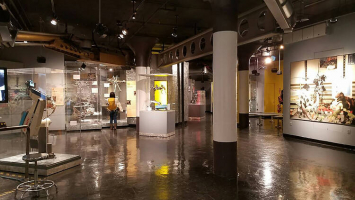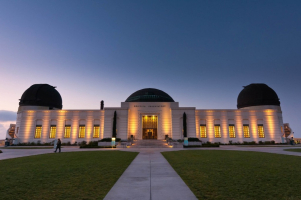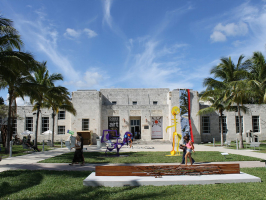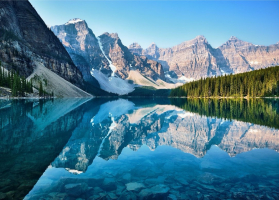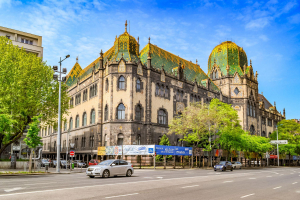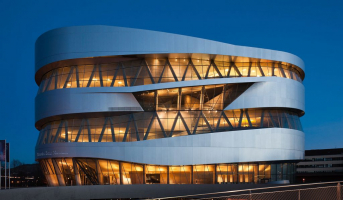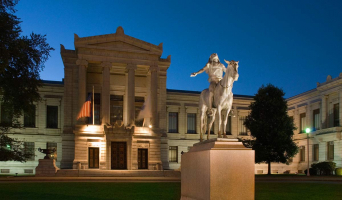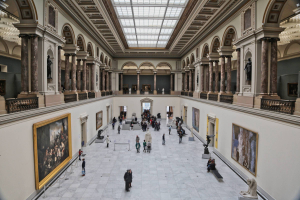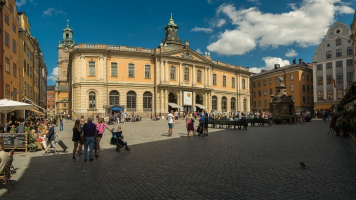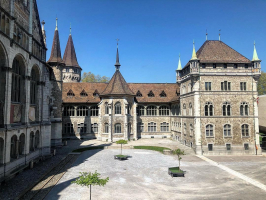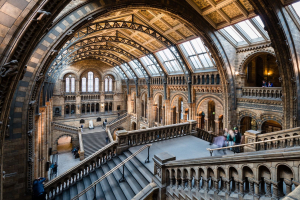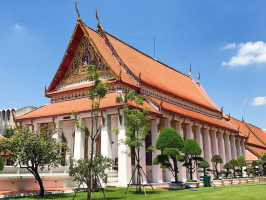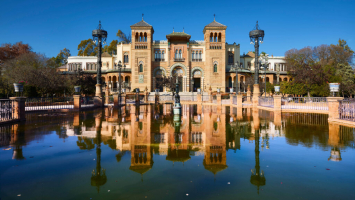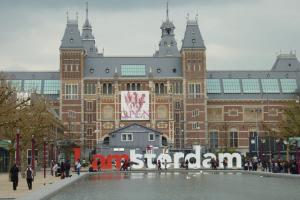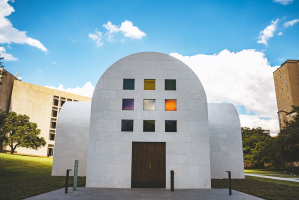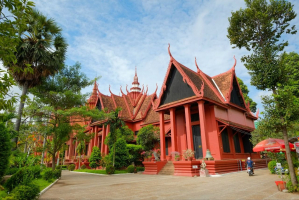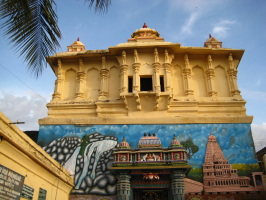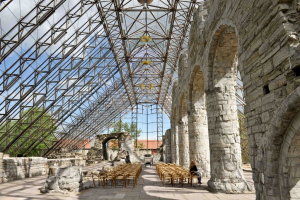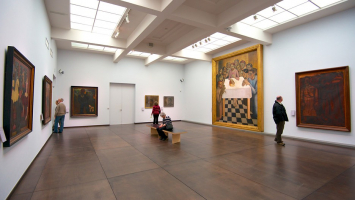Top 10 Best Museums to Visit in Canada
There's nothing quite like wandering through the hallways of a wonderful museum, surrounded by art and artifacts dating back hundreds, if not thousands, of ... read more...years. You can journey through time, immerse yourself in creativity, or discover a bit more about the cosmos is only a few hours. In Canada, there are approximately 2,000 museums, each with its own unique narrative to tell. Toplist has compiled a list of the best, which draw crowds year after year with their outstanding displays and collections.
-
The Royal British Columbia Museum (also known as the Royal BC Museum) was founded in 1886 and houses the Provincial Archives of British Columbia as well as the Province's natural and human history museum. Victoria, British Columbia, Canada is home to the museum. In 1987, Queen Elizabeth II authorized the "Royal" title, which was granted by HRH Prince Philip to correspond with a Royal trip that year. In 2003, the museum and the British Columbia Provincial Archives combined.
Natural History, Becoming BC, and the First Peoples Gallery are the three permanent galleries of the Royal BC Museum. Natural history specimens, antiquities, and historical documents make up the museum's holdings, which number in the millions. The natural history collections contain 750,000 specimen records from BC and neighboring states, provinces, and territories. Entomology, Botany, Palaeontology, Ichthyology, Invertebrate Zoology, Herpetology, Mammalogy, and Ornithology are the eight disciplines represented in the collection. Touring exhibitions are also held at the museum. Antiquities from the RMS Titanic, Leonardo da Vinci, Egyptian artifacts, the Vikings, the British Columbia gold rushes, and Genghis Khan have all been included in previous shows.
Location: 675 Belleville St, Victoria, BC V8W 1A1, Canada
Website: royalbcmuseum.bc.ca
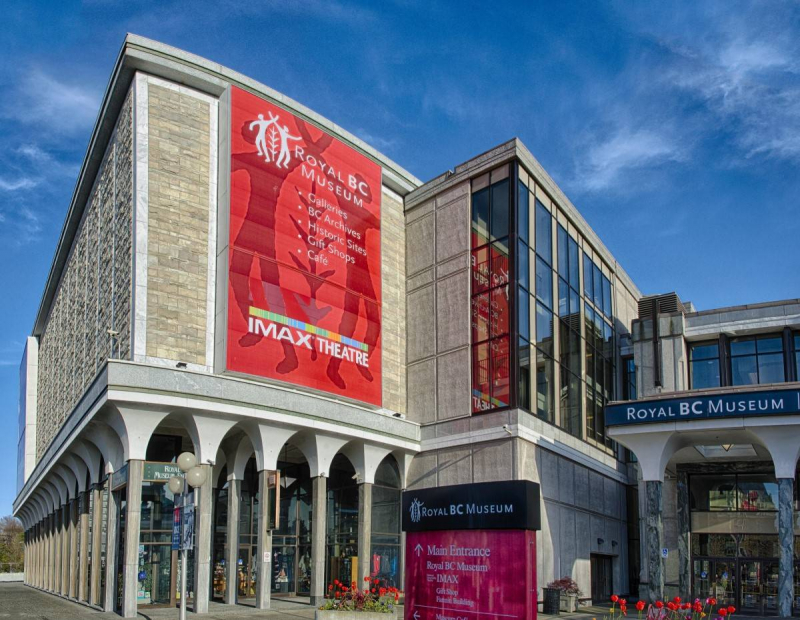
Royal BC Museum 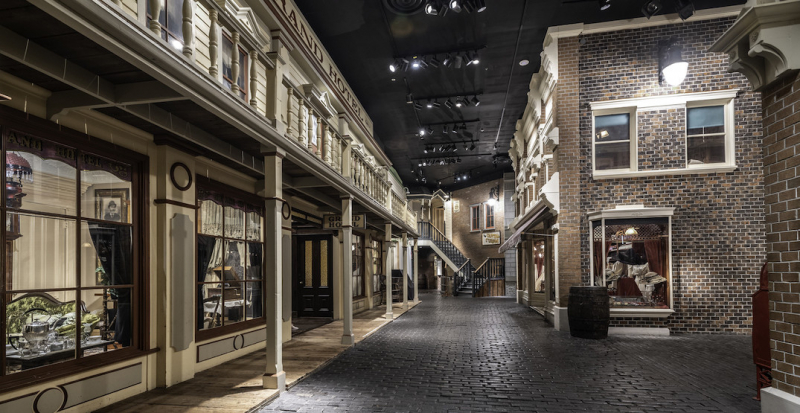
Royal BC Museum -
The Canadian Museum for Human Rights is a national museum and Crown corporation in Winnipeg, Manitoba, Canada, near The Forks. "Explore the subject of human rights with a specific but not exclusive reference to Canada, to enrich the public's awareness of human rights, to promote respect for others, and to foster thought and conversation", according to the museum's mission statement.
The CMHR was established in 2008 when Bill C-42, an amendment to the Museums Act of Canada, was passed. It is Canada's first new national museum since 1967, and it is also the first national museum outside of the National Capital Region. On September 19, 2014, the Museum performed its opening ceremony. The Friends of the Canadian Museum for Human Rights is the non-profit organization in charge of recruiting and sustaining all types of philanthropic support for the Museum.
Location: 85 Israel Asper Way, Winnipeg, MB R3C 0L5, Canada
Website: humanrights.ca
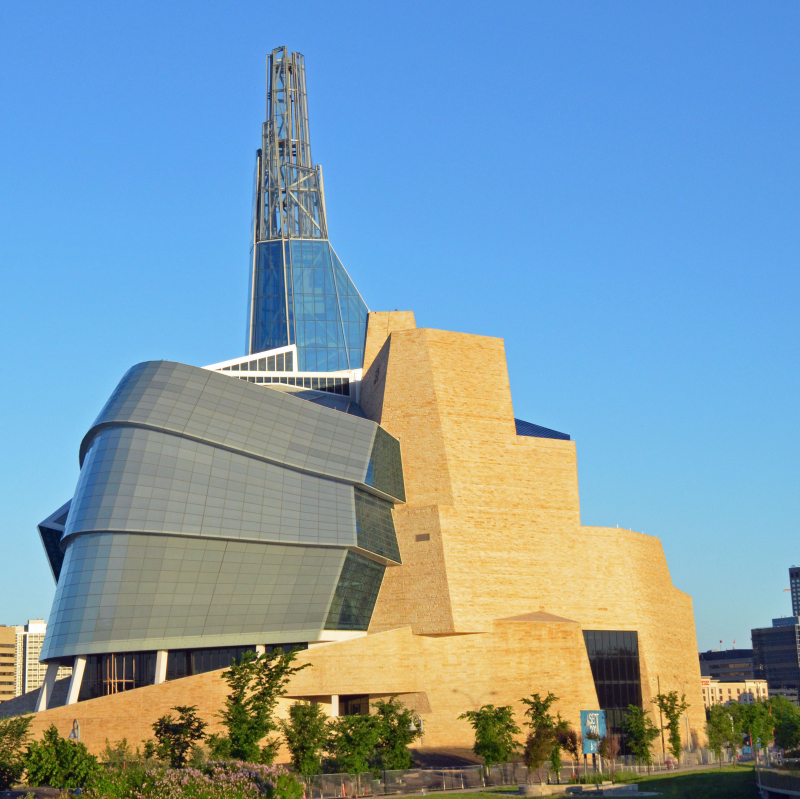
Canadian Museum for Human Rights 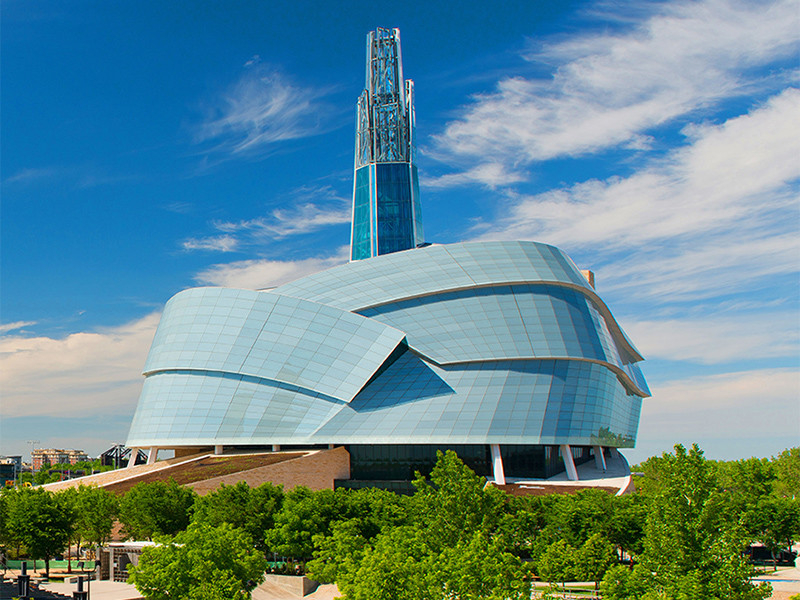
Canadian Museum for Human Rights -
The Canadian War Museum is a national museum in Ottawa, Ontario, Canada, dedicated to the country's military history. The museum acts as a place of commemoration as well as an instructional facility about Canadian military history. The museum building on LeBreton Flats, south of the Ottawa River, spans 440,000 square meters (4,700,000 square feet). There are several exhibitions and monuments in the museum, as well as a café, theater, curatorial and conservation areas, and storage space. The Military History Research Centre, as well as the museum's library and archives, are all housed in this structure.
Although the Canadian War Museum was initially founded in 1942, some of its holdings date back to a military museum that existed from 1880 to 1896. The Public Archives of Canada ran the museum until 1967, when the National Museums of Canada Corporation was established to oversee a number of national institutions, including the war museum. The military museum was moved from its original location to the old Public Archives of Canada building in the same year. Over 500,000 items linked to military history, including over 13,000 works of military art, are housed in the museum's collection. The museum has sponsored and arranged a number of traveling exhibitions about Canadian military history in addition to its permanent exhibition.
Location: 1 Vimy Pl, Ottawa, ON K1R, Canada
Website: warmuseum.ca
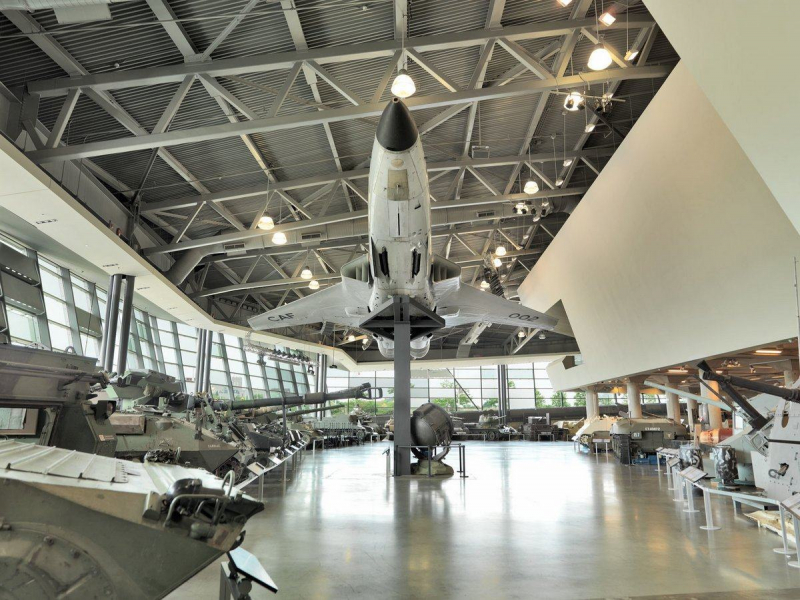
Canadian War Museum 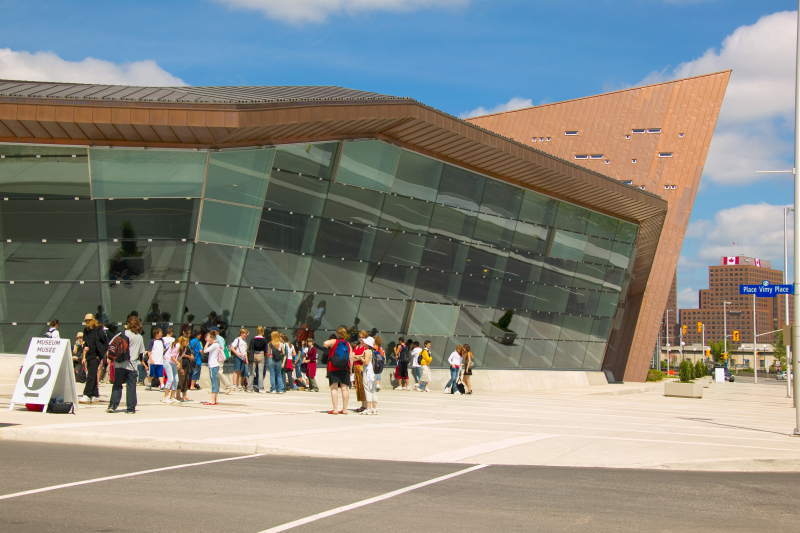
Canadian War Museum -
The Canadian Museum of History is a national museum in Gatineau, Quebec, Canada, dedicated to anthropology, Canadian history, cultural studies, and ethnology. The museum's mission is to highlight Canada's heritage while also supporting relevant research. The museum is housed in a Douglas Cardinal-designed 75,000-square-meter (810,000-square-foot) structure.
The museum evolved from the Geological Survey of Canada's museum, which was founded in 1856 and later extended to include an anthropological branch in 1910. The museum was renamed the National Museum of Canada in 1927. In 1968, the National Museum of Man was formed when the anthropology and human history sections were separated from the rest of the museum. In 1989, the museum moved to its current home in Gatineau, and the name Canadian Museum of Civilization was adopted the following year. The museum's name was changed to the Canadian Museum of History in 2013, and its purpose was changed to focus more on Canadian identity and history.
Over three million objects and papers are housed in the museum's collection, with some on show in the museum's permanent displays. A number of temporary, traveling, and online exhibitions, such as the Virtual Museum of New France, are also hosted and organized by the museum.
Location: 100 Laurier Street, Gatineau, QC K1N 5B8
Website: historymuseum.ca
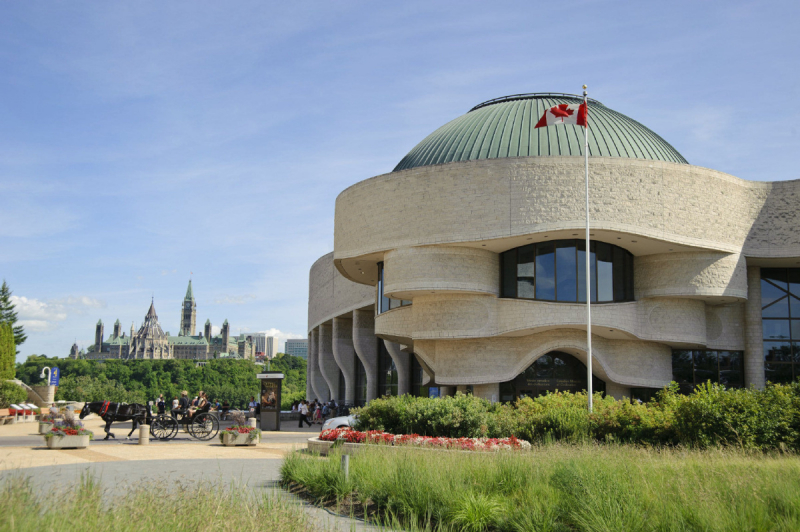
Canadian Museum of History 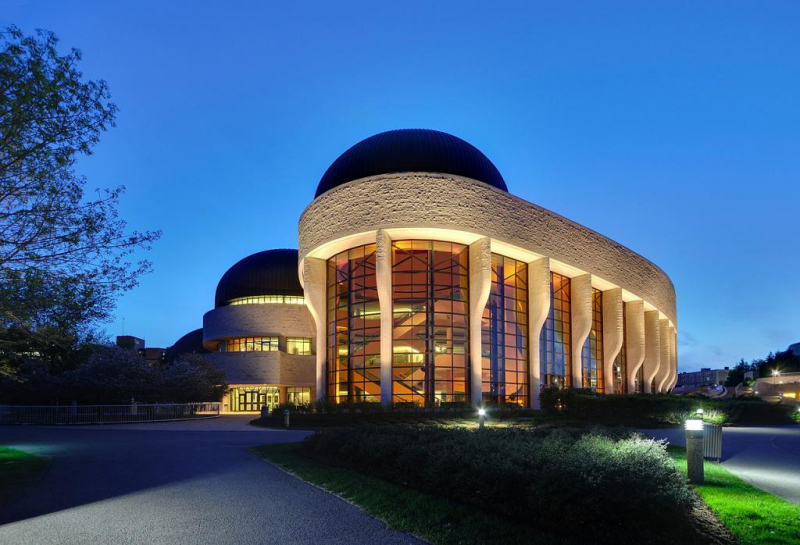
Canadian Museum of History -
The Western Development Museum is a collection of four museums in Saskatchewan, Canada, dedicated to preserving and documenting the province's social and economic development. Moose Jaw, North Battleford, Saskatoon, and Yorkton all have museums. Each branch focuses on a distinct subject, such as transportation, agriculture, the economy, and people. The Canadian Museums Association, the Canadian Heritage Information Network, and the Virtual Museum of Canada are all members of the museum.
The museum was established in 1949 with the enactment of the Western Development Museum Act, which began as a grass-roots campaign. In 1949, the museum moved into a restored hangar in North Battleford. A comparable building in Saskatoon was turned into a second museum location later that year. In 1951, a third hangar was purchased in Yorkton and renovated as well. The first purpose-made facilities for new museum locations in Yorkton and Saskatoon were erected in 1972, followed by the establishment of a new museum in Moose Jaw in 1976.
Location: 2610 Lorne Ave, Saskatoon, Saskatchewan S7J 0S6 Canada
Website: wdm.ca
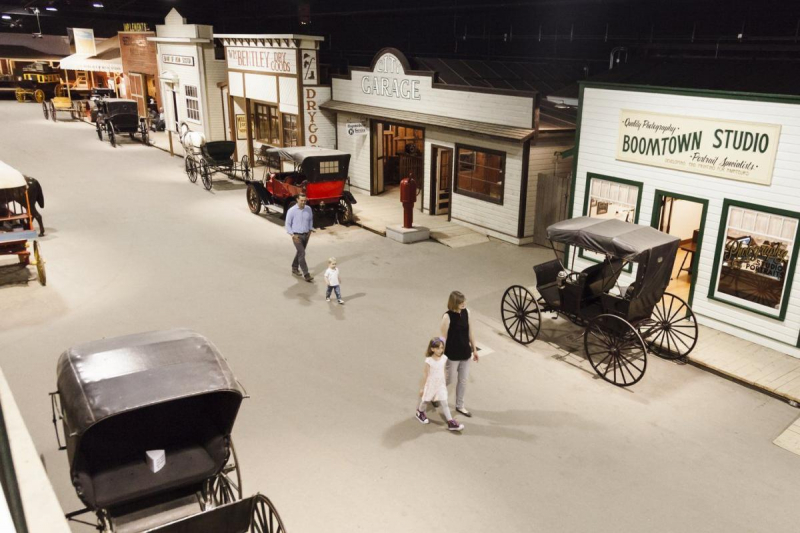
Western Development Museum 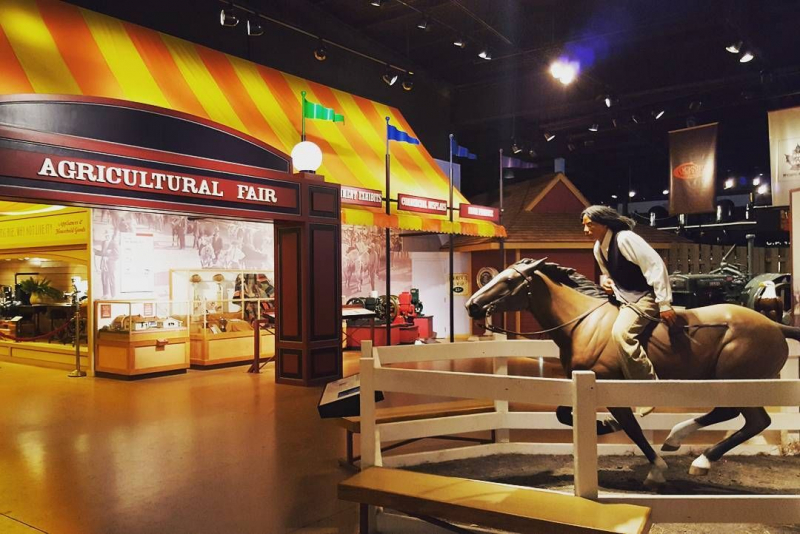
Western Development Museum -
The Prince of Wales Northern Heritage Centre (PWNHC) is the government of the Northwest Territories' museum and archives (Centre du Patrimoine septentrional Prince-de-Galles in French). The PWNHC is a professional museum, archives, and cultural resource management organization based in Yellowknife, Northwest Territories, Canada. It acquires and manages objects and archival materials that represent the cultures and history of the Northwest Territories (NWT), plays a key role in documenting and providing information about the NWT's cultures and history and provides professional museums, archives, and cultural resources management services to partner organizations.
In the early 1950s, a group of history-loving Yellowknifers envisioned a museum for the Northwest Territories, and after several years of planning and three years of building, the 'Museum of the North' opened in downtown Yellowknife in July 1963. It was run by volunteers with the Yellowknife Museum Society until 1970 when the government of the Northwest Territories took over the upkeep of the artifacts.
The PWNHC preserves a substantial collection of artefacts representing NWT peoples and cultures in the trust of the public and develops exhibitions that share stories about the NWT's land, people, and history. The PWNHC, on the other hand, is "more than a museum". The PWNHC also houses the NWT Archives, offers technical, logistic, and financial assistance to persons and groups interested in cultural activities and the arts, and permits archaeological investigations in the NWT, in addition to its exhibitions, collections, and conservation projects.
Location: 4750 48th St, Yellowknife, NT X1A, Canada
Website: pwnhc.ca
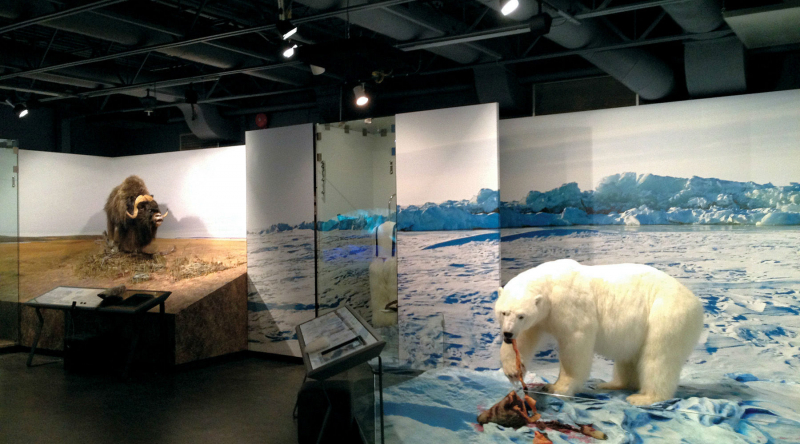
Prince of Wales Northern Heritage Centre 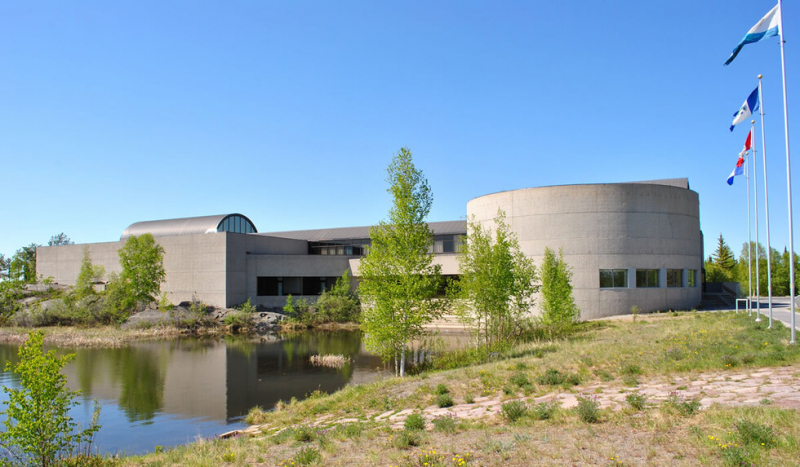
Prince of Wales Northern Heritage Centre -
The Royal Ontario Museum is a museum in Toronto, Ontario, Canada, dedicated to art, foreign culture, and natural history. It is the largest museum in Canada and one of the largest in North America. Every year, over one million people visit the ROM, making it Canada's most visited museum. The museum is located in the University of Toronto neighborhood, north of Queen's Park, with its main entrance on Bloor Street West. The Museum metro station is named after the ROM and has been designed to mimic the institution's collection since a 2008 refurbishment.
The museum, which was founded on April 16, 1912, and first opened on March 19, 1914, has maintained close ties with the University of Toronto throughout its existence, frequently pooling expertise and resources. Until 1968, when it became an independent Crown agency of the Government of Ontario, the museum was under the direct authority and supervision of the University of Toronto. The museum is now Canada's largest field-research institution, with research and conservation projects taking place all over the world.
The museum's broad collections of world culture and natural history contribute to its international prominence, with over 6,000,000 pieces and 40 galleries. The museum houses dinosaurs, minerals, and meteorites, as well as historical relics from Canada and Europe, as well as African, Near Eastern, and East Asian art. It has the world's biggest collection of Burgess Shale fossils, with over 150,000 specimens. Clothing, interior, and product design, particularly Art Deco, are all represented in the museum's design and fine art collections.
Location: 100 Queens Park, Toronto, ON M5S 2C6, Canada
Website: rom.on.ca
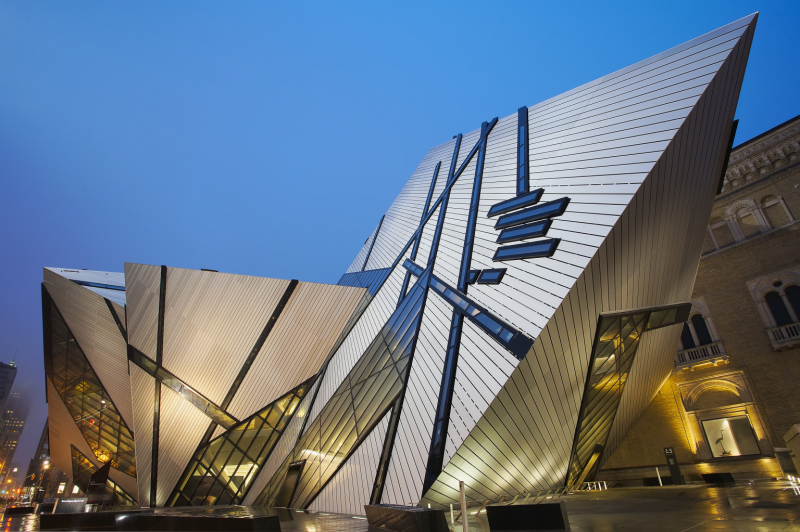
Royal Ontario Museum 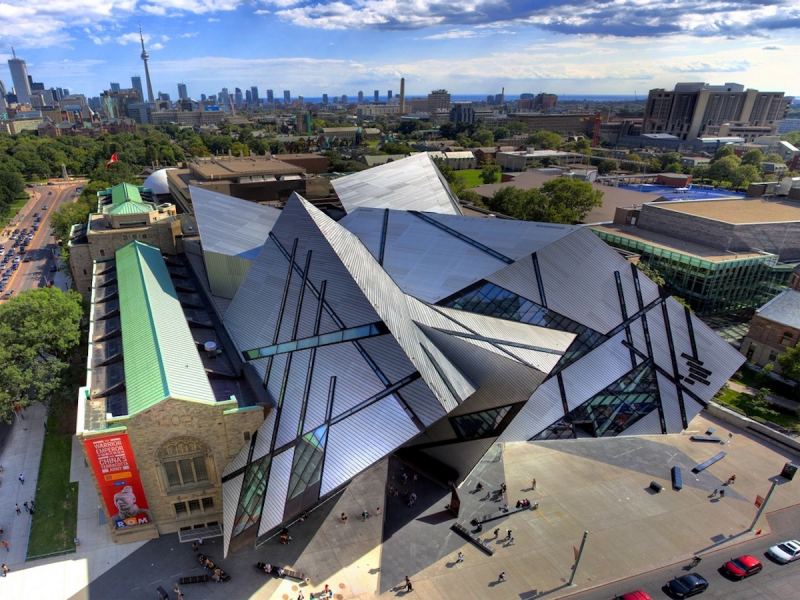
Royal Ontario Museum -
In Toronto, Ontario, Canada, the Hockey Hall of Fame is a museum and hall of fame. It houses displays regarding players, teams, NHL records, memorabilia, and NHL trophies, including the Stanley Cup, and is dedicated to the history of ice hockey. The Hockey Hall of Fame was founded in 1943 in Kingston, Ontario, under the guidance of James T. Sutherland. Before the Hall of Fame had a permanent site, the first class of honored members was admitted in 1945. After the NHL discontinued its backing for the International Hockey Hall of Fame in Kingston, Ontario, due to budget concerns, it relocated to Toronto in 1958. In 1961, it opened its first permanent structure at Exhibition Place.
There are 15 display spaces totaling 60,000 square feet in the Hockey Hall of Fame. During special games, visitors can see trophies, mementos, and equipment used by players. The Esso Great Hall, dubbed "a Cathedral to Hockey's Icons", houses photographs and biographical information on each Hall of Fame inductee. The Stanley Cup is the focal point of the Great Hall; for part of the year, a replica is on display while the presentation cup is on tour outside of the Hall of Fame. In the bank vault, an alcove off the Great Hall, the original Cup, and earlier rings, as well as all of the current National Hockey League trophies, are on display.
Location: 30 Yonge St, Toronto, ON M5E 1X8, Canada
Website: hhof.com
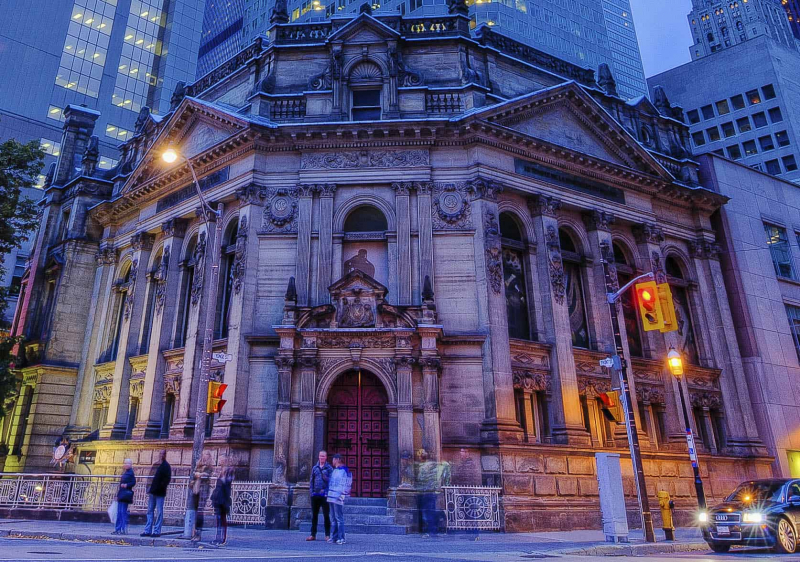
Hockey Hall of Fame 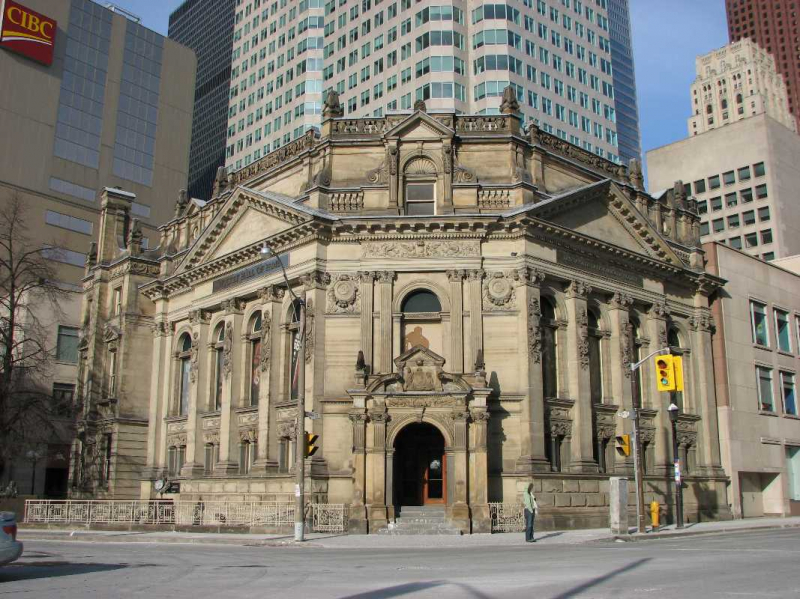
Hockey Hall of Fame -
The Royal Tyrrell Museum of Palaeontology (RTMP) is a paleontology museum and research center near Drumheller, Alberta, Canada. The museum is housed in a 12,500-square-meter (135,000-square-foot) facility created by BCW Architects at Midland Provincial Park and is dedicated to Joseph Burr Tyrrell.
The provincial government launched efforts to construct a paleontology museum in 1981, and the Provincial Museum of Alberta's paleontology program was split out to help support the development of a paleontology museum. The Tyrrell Museum of Palaeontology opened in September 1985, after four years of planning. The museum's personal collection has over 160,000 cataloged fossils, including over 350 holotypes, giving it the country's biggest fossil collection. In its museum exhibits, the museum shows over 800 fossils from its collection. The museum's fossil collection is used by the museum's research program, which has a duty to chronicle and evaluates geological and palaeontological history, in addition to exhibitions.
Location: 1500 N Dinosaur Trl, Drumheller, AB T0J 0Y1, Canada
Website: tyrrellmuseum.com
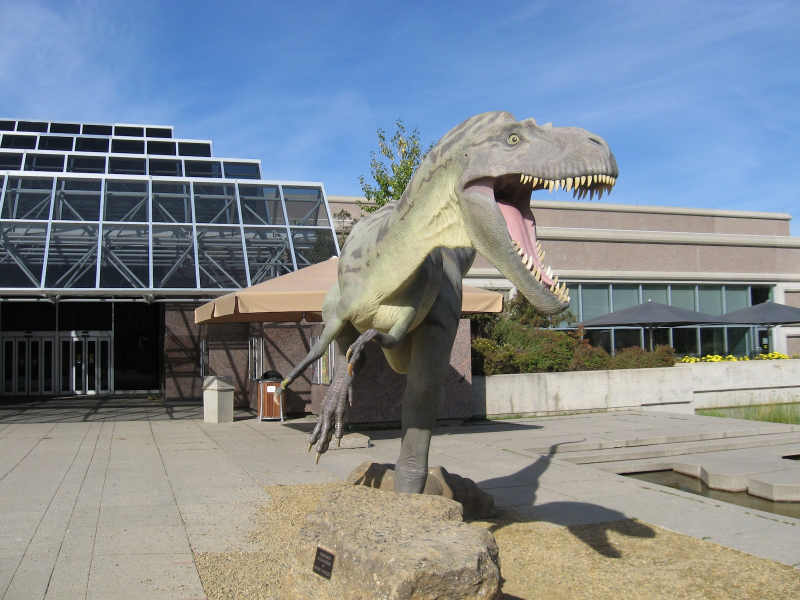
Royal Tyrrell Museum 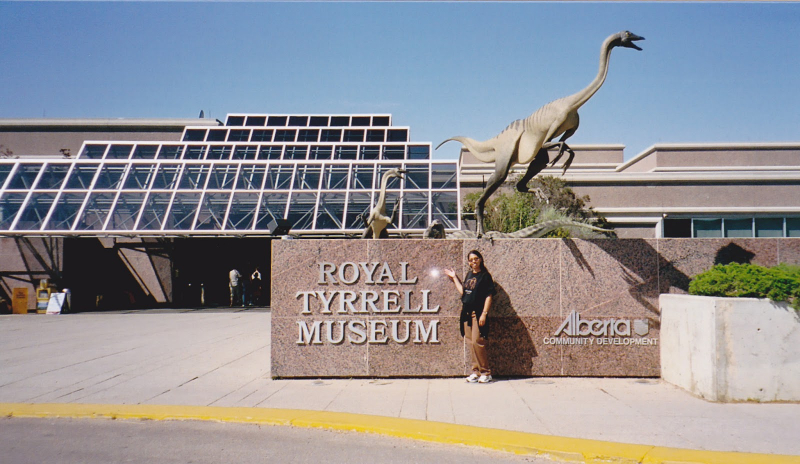
Royal Tyrrell Museum -
The Burnaby Village Museum, formerly known as the Heritage Village, is an open-air museum in Deer Lake Park in Burnaby, British Columbia, Canada. From May to September, it is open seasonally, and from September to March, it is open for special events. The Museum was initially called the Heritage Village when it opened in 1971. It has developed from a 4.3-acre property with a few exhibits to a 10-acre historic site and significant Metro Vancouver destination.
The Burnaby Village Museum is a rebuilt 1920s village with 31 full-scale buildings and costumed employees who exhibit traditional trades. The museum is spread out across 10 acres (4 hectares). Some of the structures are original heritage structures that have been relocated and renovated from other parts of the neighborhood. Others are replica buildings, such as a 1912 B.C. Electric Railway interurban trams, that were built to hold certain exhibitions and relics. The Museum is also home to the 1912 C. W. Parker Carousel, which is open to the public for rides.
Location: 6501 Deer Lake Ave, Burnaby BC V5G 3T6, Canada
Website: burnabyvillagemuseum.ca
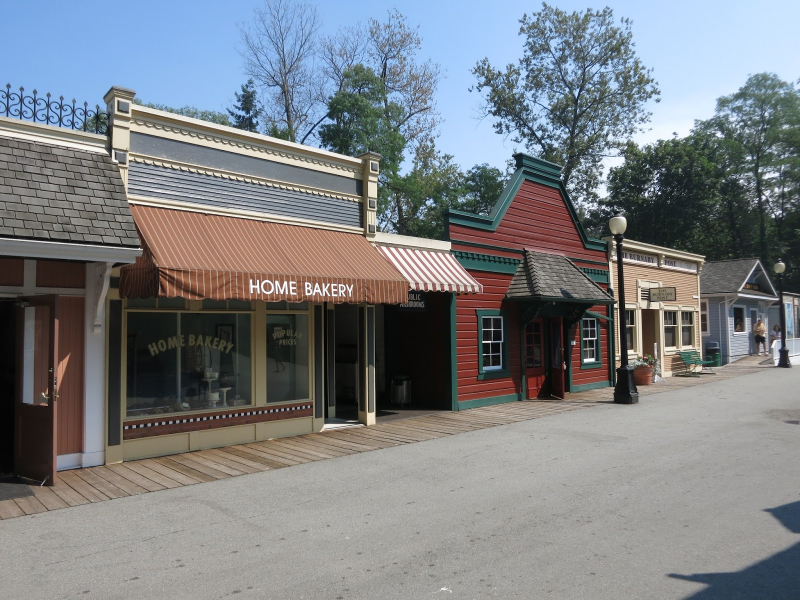
Burnaby Village Museum 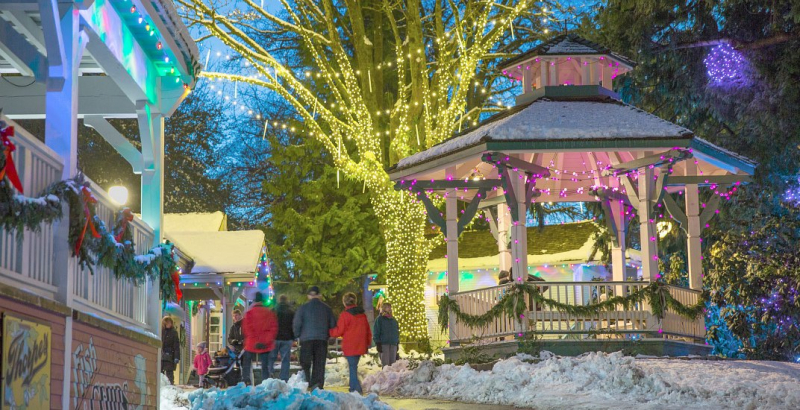
Burnaby Village Museum












